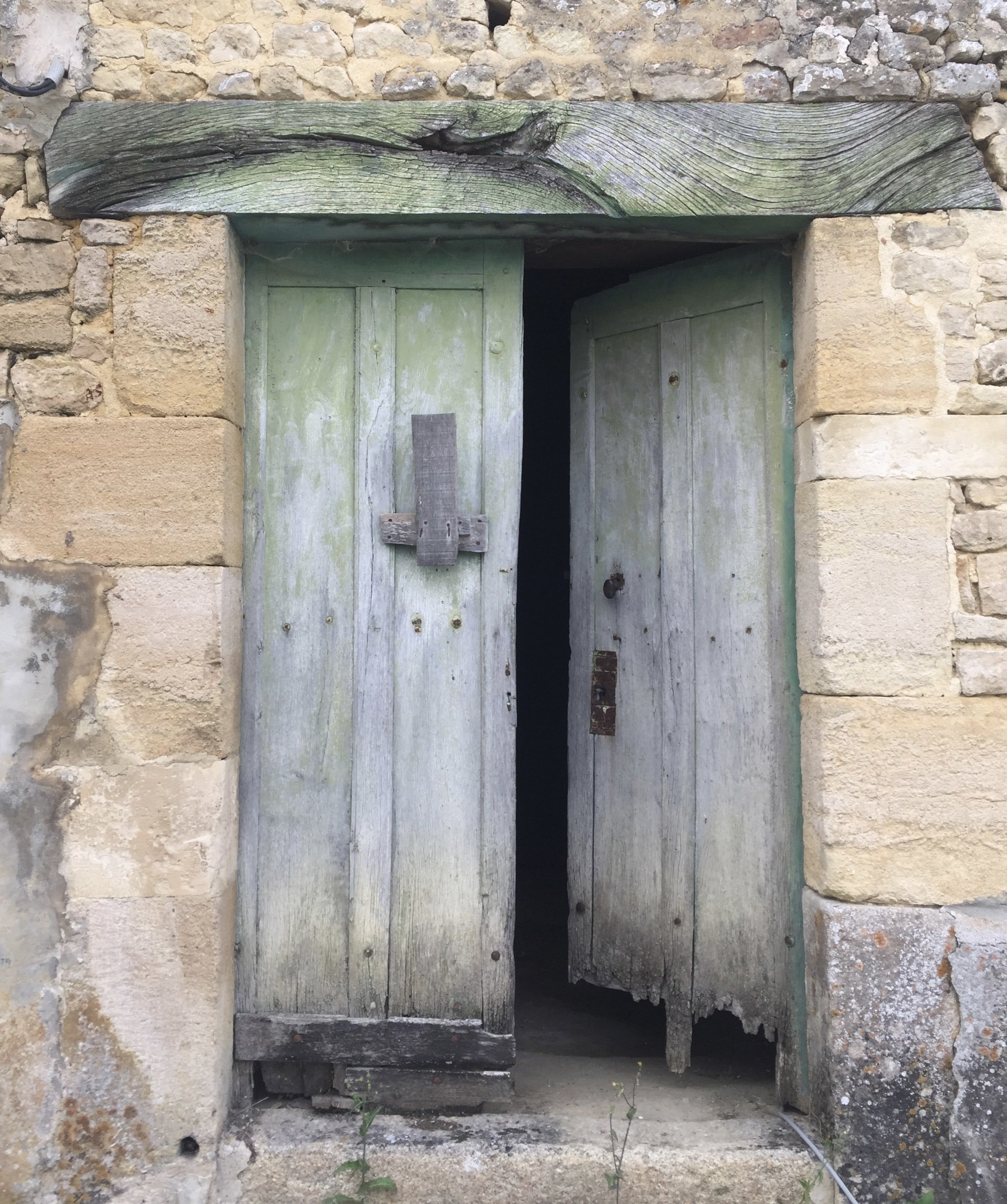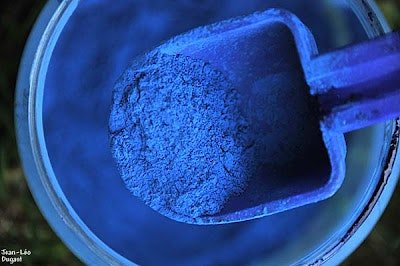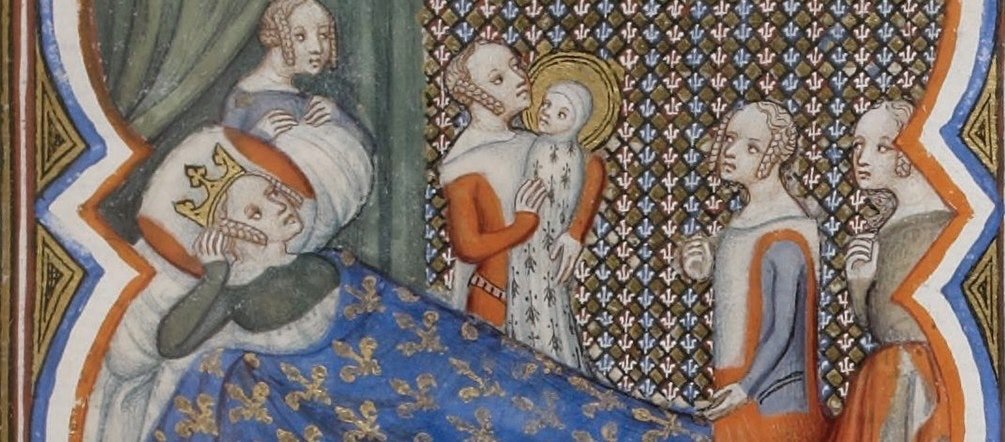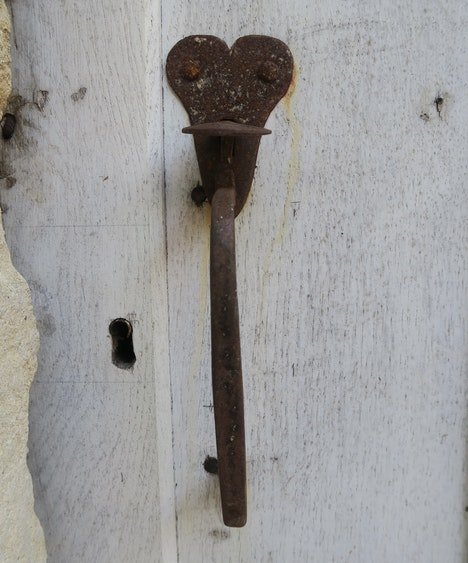L'heure bleue
L'heure bleue...blue...a painting project at the Farmhouse...
Saturday, February 19, 2022
Time takes a toll on the old farmyard doors.
Chère amie, cher ami,
“You’re going to have to paint those doors,” remarked Monsieur, stretching out his long legs in front of the cheminée in the Farmhouse.
He took a steaming cup of tea, delicately allowed a trickle of larmes, “tears” of milk, to lighten its peaty hue, and helped himself to a slice of brioche normande.
“And that portail,” he added, shaking his head as he gazed out the window. The big metal door that slides across the entrance into the grange, where we keep the tractor, is a study of the chromatic effects of rust. Across the undulating grey surface of the metal, a bumpy chestnut brown is streaked with coppery red.
I’ve become used to the weather-beaten old doors in the Basse-Cour, fond of their faded hues. Decades of sun and rain have leached out the pigments of the original paint. Particularly lovely is the door to the grange beside the Farmhouse. Like a ghostly apparition, the powdery remains of color tint the underlying wood with a soft and vanishing essence of pale blue.
The other day, however, I found myself realizing that the door was actually green. It looked as bright and tender as a lettuce leaf.
Most unexpected! Colors in France, like table manners, children, and grammar, follow strict rules. Green might be possible, but surely not that sort of vivid color. And certainly not in Normandy. With a touch of audace, and only in the sun-saturated South of France, one might permit oneself the muted avocado of “le vert végétal.”
I took a closer look. The last flakes of ancient blue paint seemed to have disappeared at last. And the old wooden door was covered with a fine patina of bright green lichen.
From an agricultural treatise on growing and processing pastel, published in 1786.
Once I had started to observe the effects of wind and weather on the huisseries – a word that refers to wooden frames, like doors and windows, that are inserted into a building – I had to agree with Monsieur that it is time for a very large paint project. Les beaux jours of springtime are propice for painting. And they are not far away.
I have learned the hard way that color is not only a highly personal taste, it varies according to light conditions and the surrounding environment. Once, I had painted our entire house what was intended to be a clean, chalky white. The light bouncing off the surrounding trees and lawn bathed our rooms in an acid green glow.
“Just get some cans of blue paint,” urged Monsieur.
“Paralysis by analysis,” he muttered, as I took up a nuancier and looked in consternation at the various tones of blue.
Monsieur is right. Choices are easier when options are few. No one really needs 50 shades of blue.
Looking back 300 or 400 years, when most of our farm buildings had already taken shape, there would have been one choice – bleu vouède. Blue pigment was made from vouède, the Norman word for the woad plant. Lanky cousin to the cabbage with spikes of small bright yellow flowers, woad grew throughout Normandy. The leaves were boiled down, pounded into a paste, fermented, and then rolled into balls called "pastels." The pastels could be easily transported, and stored for several years. The big commercial city of Rouen, at the head of the Seine river with access to the sea and to other ports, was a center of the pastel trade -- not only for Normandy but from below the Loire and up into Picardy.
The pigment was used to dye cloth. In those early days, a Norman had a second choice if he did not care for bleu vouède: red. A dyer also had two choices. He was either a teinturier en guesde, the French word for vouède, or a garancier, dying cloth with pigment made from the roots of Rubia tinctorum, the garance.
But woad had other useful properties. Going all the way back to the Greeks and Romans, it was an antiseptic for wounds. Painted on the horns of cattle, it kept away flies. And les paysans daubed it on wood to prevent woodworm. This is the origin of a color still seen on many a farm door or shutter throughout France. And it adorned so many farm carts that the hue is still called bleu charrette, “cart blue.
Preparing "bleu charette"
“Blue,” stated our friend Reynald, who had stopped in for un petit thé on his afternoon walk, “is not a natural color.”
What could I do but offer him a slice of brioche normande? Reynald, professor at the Sorbonne, does not mean to cast gloom on my quest for the right blue. But he is a stickler for rigor and precision.
He explained that in nature, blue is rarely the result of blue pigment. It is achieved through tricks of light or a chemical reaction.
“But you perceive it as blue,” he added, kindly. “Although of course, blue is a rather recent mental construct.”
It seems that the ancient Greeks and Romans, though they used woad for healing, did not even have a word for blue.
“Homer does not sing of a blue sky, does he? And what of the sea?” he insisted. “After all, οἶνοψ πόντος.”
We reflected. Indeed, Odysseus looks out at the “wine-dark” sea. And compares the sky to a bronze shield.
“Just go to Agrial and pick out a can of paint,” put in my husband, referring to the agricultural cooperative at the edge of the village. But Reynald had warmed to his theme.
Perhaps because they did not think of it as a proper color, the Romans scorned the wearing of blue cloth. One draped oneself in respectable black, red or white. Red was the color of majesty. What changed?
“Pourquoi?” repeated Reynald rhetorically. “Notre Dame!”
Blue became the color of the Virgin Mary around 500 A.D., apparently because it was an imperial color in the Byzantine court. But Byzantium was a long way from France in the 6th century. Barbarian tribes, having conquered the Romans, were jostling for power. They were barely Christian, much less interested in la Sainte Vièrge.
It was medieval philosophers who were ultimately responsible for making blue fashionable in France.
In the medieval way of looking at the world, all natural phenomena had a hidden, spiritual meaning. Colors were invested with moral significance. Black was sin and death. Red, lusty and carnal, was for kings. Blue, in a significant break with classical thinking, represented the divine.
Light itself, which allows us to perceive colors, was of two natures. Earthly light, from the sun, the moon, and the stars, allows us to see earthly things. And divine light illuminates and reveals the invisible truths of the spirit. Lumen was white light. Lux, divine light, was blue.
Blue, these philosophers knew, was the color of heaven and the firmament. As the prophet Ezekial describes it in the Bible, “And above the firmament that was over their heads was the likeness of a throne, as the appearance of a sapphire stone…”
Perhaps it is no coincidence that the blue pigment used in late medieval paintings to depict the blue of heaven and Mary’s blue robes was extremely rare and precious. It was made of crushed lapis lazuli, known to the medieval world as sapphire, carried all the way from Afghanistan.
Mary’s blue mantle spread, metaphorically speaking, over the kingdom of France. Its kings placed themselves under her patronage. Earlier kings wore red; by 1211, Philippe Auguste wore blue, and his coat of arms was a field of azur strewn with lilies, the flower of the Virgin Mary. The image below shows the birth of Philippe’s little grandson, Saint Louis, whose mother lies safely under the azur-blue Capetian mantle.
Queen Adèle, protected by the blue mantle of the Capetian kings, gazes at the long-awaited prince who will grow up to be Saint Louis. From Les Grandes Chronicles de France de Charles V, in the Bibliothèque national in Paris.
We might note, added Reynald parenthetically, that because Latin had no word for “blue” the word “azur” had found its way into medieval Latin from Arabic.
“Notons également,” he persisted, that we surely owe the blue pigment itself to Moorish traders. They would have imported Isatis tinctoria, the Latin name for woad, into southern France from its Asian origins.
By the 13th and 14th centuries, the record shows parishes paying le dîme, church tithes, in pastel. Although the richest center of pastel production was in the South of France, the fertile plains around our nearby city of Caen were also famous. Meanwhile, in the hilly Bocage of Normandy, a family could produce woad as a cash crop on a small plot of land.
Well before artists realized they could mix pigments with linseed oil and paint with it – a revolution in fine art that occurred in the 15th century -- farmers were doing the same thing with blue pigment from woad.
“There,” interjected Monsieur, looking up from his telephone. “I found a place where you can buy woad pigment. You get some and I will mix it up with some linseed oil and a little turpentine.”
It was growing late. Reynald put on his hat and strolled away in the darkening light of the winter afternoon.
“C’est l’heure bleue,” said Monsieur, as we stood by the door of the Farmhouse.
“C'est l'heure que je préfère, on l'appelle l'heure bleue
Où tout devient plus beau, plus doux, plus lumineux…” he sang, with a twinkle in his eye.
“C'est l'heure de l'attente quand on est amoureux
Attendre celui qu'on aime, il n y a rien de mieux,” I sang back. *
We closed the door and turned to the bright fire and its leaping flames of red and blue.
Hoping you enjoyed your own Fête du Saint Valentin last Monday,
à très bientôt, chers amis!
Elisabeth
* This is the hour I long for, the blue hour,
More beautiful, more sweet, more luminous…
This is the waiting hour, when one’s in love
Waiting for the beloved, there nothing more sweet…
From “L’heure bleue” by Françoise Hardy, a tube of 1970. Pour vous diverter, cick here or here
An old door at the Farmhouse with its original heart-shaped "poignet,” or handle.
P.S. Heather and Beatrice (info@chateaudecourtomer.com and +33 (0) 6 49 12 87 98) will be happy to help you reserve your holiday or special gathering at the Farmhouse or the Chateau. We still have a few openings for this year and are taking bookings through 2024. Please feel free to call or write us.





